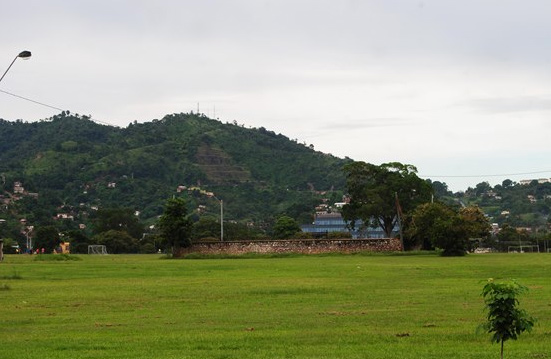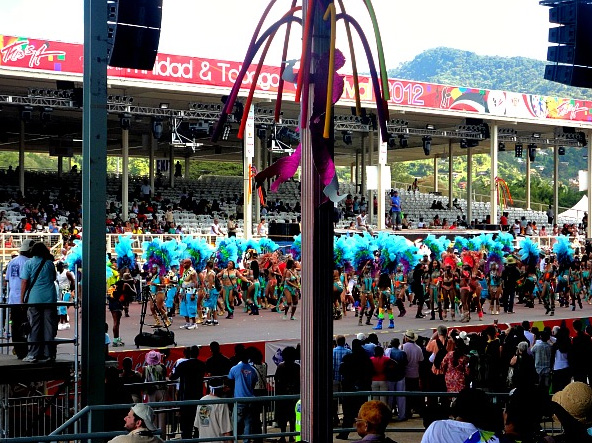This Cookie Policy was last updated on the 25th September 2020.
1.0 INTRODUCTION
National Trust of Trinidad and Tobago, a membership-based organisation established by the National Trust of Trinidad and Tobago Act Chap. 40:53 with its business address at 68-70, Sackville Street, Port of Spain, Republic of Trinidad and Tobago (‘We’ or ‘Us’ or ‘Our’) may use cookies, web beacons, tracking pixels, and other tracking technologies when you visit Our website - Nationaltrust.tt - including any other media form, media channel, mobile website, or mobile application related or connected thereto (collectively, the “Website”) to help customize the Website and improve your experience.
We reserve the right to make changes to this Cookie Policy at any time and for any reason. We will alert the user(s) of this Website (‘You’) about any changes by updating the “Last Updated” date of this Cookie Policy. Any changes or modifications will be effective immediately upon posting the updated Cookie Policy on the Website, and You waive the right to receive specific notice of such change or modification.
You are encouraged to periodically review this Cookie Policy to stay informed of updates. You will be deemed to have been made aware of, will be subject to, and will be deemed to have accepted the changes in any revised Cookie Policy by Your continued use of the Website after the date such revised Cookie Policy is posted.
2.0 USE OF COOKIES
A ‘cookie’ is a string of information which assigns You a unique identifier that We store on Your computer. Your browser then provides that unique identifier to use each time You submit a query to the Site. We use cookies on the Website to, among other things, keep track of services You have used, record registration information, record Your user preferences, keep You logged into the Site, facilitate purchase procedures, and track the pages You visit. Cookies help Us understand how the Website is being used and improve Your user experience.
3.0 TYPES OF COOKIES
The following types of cookies may be used when You visit the Website:
3.1 Advertising Cookies
Advertising cookies are placed on Your computer by advertisers and ad servers in order to display advertisements that are most likely to be of interest to You. These cookies allow advertisers and ad servers to gather information about Your visits to the Site and other websites, alternate the ads sent to a specific computer, and track how often an ad has been viewed and by whom. These cookies are linked to a computer and do not gather any personal information about You.
3.2 Analytics Cookies
Analytics cookies monitor how users reached the Website, and how they interact with and move around once on the Website. These cookies let Us know what features on the Website are working the best and which features on the Website can be improved.
3.3 Our Cookies
Our cookies are “first-party cookies”, and can be either permanent or temporary. These are necessary cookies, without which the Website will not work properly or be able to provide certain features and functionalities. Some of these may be manually disabled in Your browser but may affect the functionality of the Website.
3.4 Personalization Cookies
Personalization cookies are used to recognise repeat visitors to the Website. We use these cookies to record Your browsing history, the pages You have visited, and Your settings and preferences each time You visit the Website.
3.5 Security Cookies
Security cookies help identify and prevent security risks. We use these cookies to authenticate users and protect user data from unauthorised parties.
3.6 Site Management Cookies
Site management cookies are used to maintain Your identity or session on the Website so that You are not logged off unexpectedly, and any information You enter is retained from page to page. These cookies cannot be turned off individually, but You can disable all cookies in Your browser.
3.7 Third Party Cookies
When You visit the Website third party cookies may be placed on Your computer by companies that run certain services We offer. These cookies allow the third parties to gather and track certain information about You. These cookies can be manually disabled in Your browser.
4.0 CONTROL OF COOKIES
Most browsers are set to accept cookies by default. However, You can remove or reject cookies in Your browser’s settings. Please be aware that such action could affect the availability and functionality of the Website.
5.0 OTHER TRACKING TECHNOLOGIES
In addition to cookies, web beacons, pixel tags, and other tracking technologies may be used on the Website to help customise the Site and improve your experience. A ‘web beacon’ or ‘pixel tag’ is a tiny object or image embedded in a web page or email. They are used to track the number of users who have visited particular pages and viewed emails, and acquire other statistical data. They collect only a limited set of data, such as a cookie number, time and date of page or email view, and a description of the page or email on which they reside. Web beacons and pixel tags cannot be declined. However, You can limit their use by controlling the cookies that interact with them.
6.0 PRIVACY POLICY
For more information about how we use information collected by cookies and other tracking technologies, please refer to Our Privacy Policy posted on Our Website. This Cookie Policy is part of and is incorporated into Our Privacy Policy and the Terms and Condition of Use of the Website. By using the Website, You agree to be bound by this Cookie Policy, Our Privacy Policy and Terms and Conditions of Use.
7.0 CONTACT US
If you have questions or comments about this Cookie Policy, please contact Us at:
National Trust of Trinidad and Tobago
68-70, Sackville Street
Port of Spain
Republic of Trinidad and Tobago.
info@nationaltrust.tt



